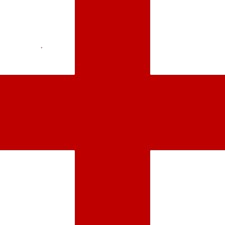𝑊ℎ𝑎𝑡 𝑂𝑢𝑟 𝐶𝑟𝑒𝑠𝑡 𝑎𝑛𝑑 𝑜𝑡ℎ𝑒𝑟 𝑆𝑦𝑚𝑏𝑜𝑙𝑠 𝑀𝑒𝑎𝑛
The eagle held deep symbolic meaning for the Celts, representing strength, wisdom, and divine connection. As a bird of prey with keen vision, it was often associated with foresight, higher perspective, and the ability to transcend earthly limitations. In Celtic mythology, the eagle was linked to the Otherworld, serving as a messenger between the mortal realm and the gods. Some interpretations also tie the eagle to warrior spirit and kingship, embodying the qualities of leadership and victory in battle. Found in ancient art and folklore, the eagle remained a powerful emblem of sovereignty and protection in Celtic culture.
The orange lily held symbolic significance in Celtic culture, often representing passion, courage, and resilience. Flowers, in general, were deeply tied to the cycles of nature and the spiritual realm in Celtic belief, with the vibrant orange hue of the lily symbolizing fire, transformation, and vitality. Some interpretations link the lily to the divine feminine, fertility, and renewal, as it blooms with striking beauty despite adversity. While not as commonly referenced as other sacred plants, the orange lily's bold color and strong presence align with the Celtic reverence for nature’s power and the ever-turning wheel of life.
The Scottish claymore sword, a large, two-handed weapon, holds deep symbolism in both Scottish and broader Celtic cultures. It represents strength, valor, and the fierce spirit of independence. Historically, the claymore was wielded by Highland warriors during the 15th to 17th centuries, becoming a symbol of Scottish pride and resistance, particularly during battles for freedom, like those in the Wars of Scottish Independence. The sword's imposing size and design reflect the warrior's courage and the harshness of the battles fought. In Celtic tradition, the claymore also symbolizes the power to protect the land and honor the ancestors. As a ceremonial and battle tool, it stands as an enduring emblem of Scottish heritage, nobility, and the unyielding pursuit of justice.
The medical cross, often associated with healing and medicine, holds symbolic importance in both Scottish and Celtic cultures, though it evolved over time in its specific meaning. In Celtic tradition, the cross was a potent symbol of life, balance, and the interconnectedness of the spiritual and physical realms. The Celtic cross, in particular, combined the Christian cross with a circle, symbolizing eternal life and the divine, often representing healing, protection, and the passage of time. In the context of Scottish heritage, the medical cross came to symbolize the healing arts, especially as the Scottish embraced Christianity and its associated practices. The symbol became linked to hospitals and healthcare, emphasizing compassion, care, and the sacred duty of healing, which resonated deeply with both the spiritual and practical aspects of Celtic life.




